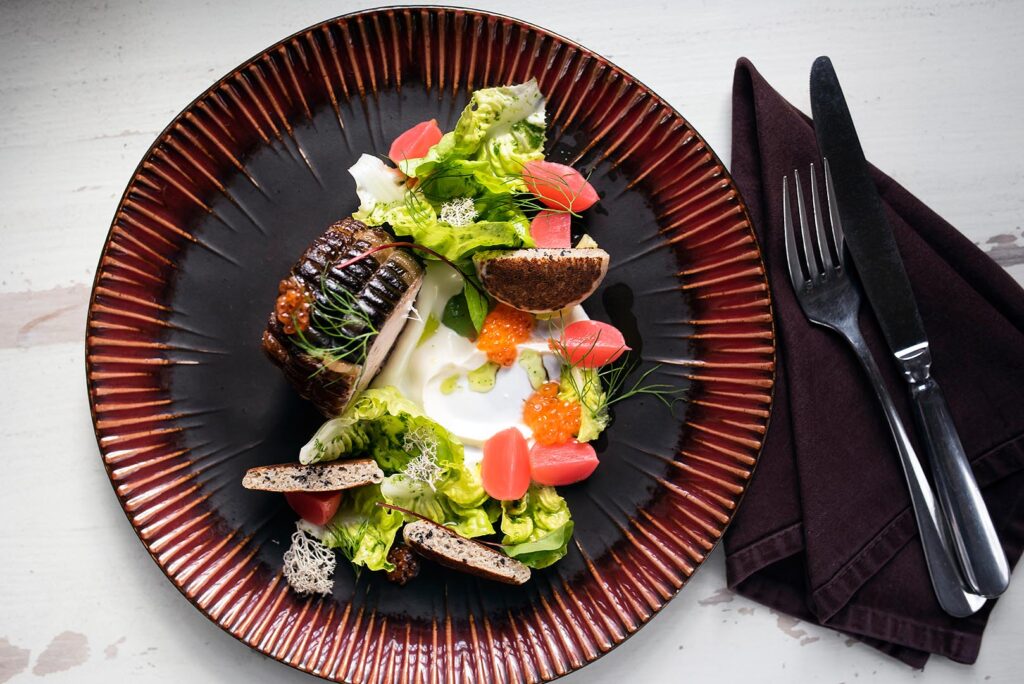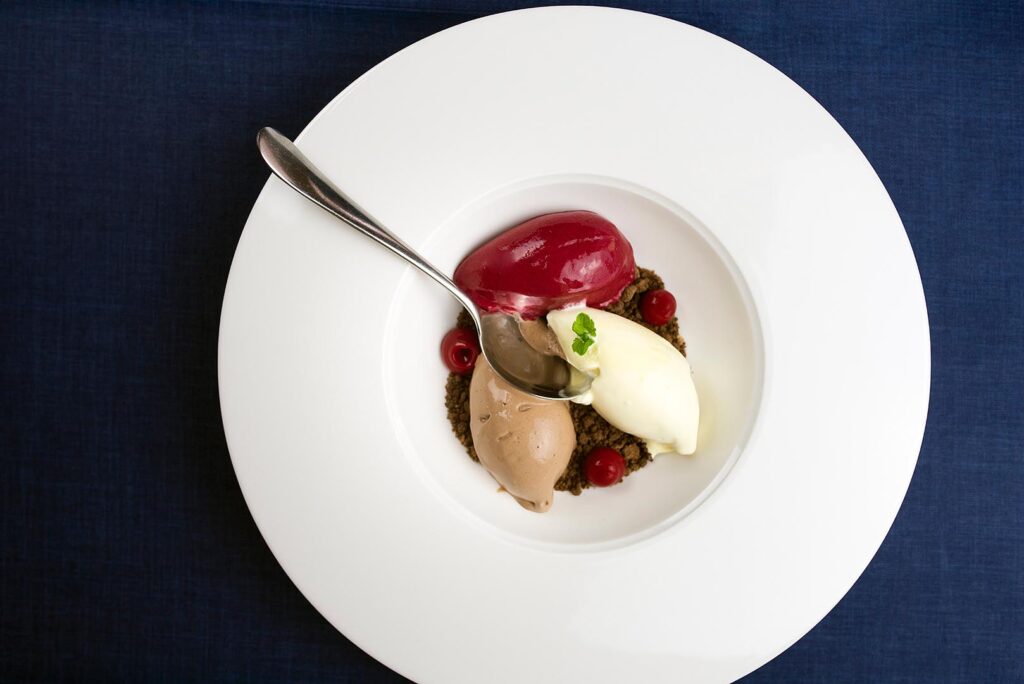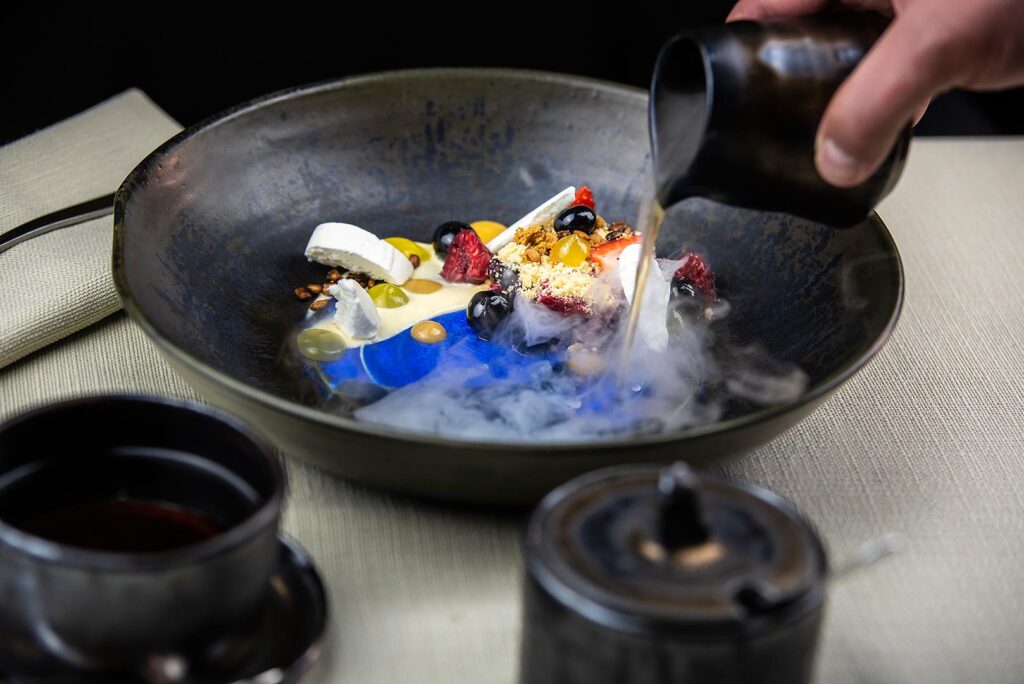
Gmina Lublin realizuje od 1 lutego 2020 r. do 31 lipca 2021 r. projekt pn. „Dziedzictwo kulturalne od kuchni – promocja tradycji kulinarnych oraz profesjonalizacja oferty gastronomicznej Lublina i Równego” współfinansowanego przez Unię Europejską na potrzeby Europejskiego Instrumentu Sąsiedztwa w ramach Programu Współpracy Transgranicznej Polska – Białoruś – Ukraina 2014–2020 od 1 lutego 2020 r. do 31 lipca 2021 r.
Tasting regional dishes and products, combined with sightseeing and learning about the history and culture of the place, is becoming increasingly popular with tourists. Culinary travel is gaining in importance. This is connected with the desire to explore the world with all the senses and to seek new experiences.
On the map of tastes of Lublin, Cebularz is leading the way. Then there is Forszmak and a dumpling of buckwheat or millet grains. The culinary history of the Lublin region has been shaped over several centuries, and the contemporary flavours of the city are intertwined with the traditions of Old Polish, Jewish, Armenian and Borderland cuisine. The Lublin table must therefore include all kinds of groats, cheeses, fish, pork from the Puławy pig or honey. Many of them have been included on the list of traditional products of the Lublin Region.


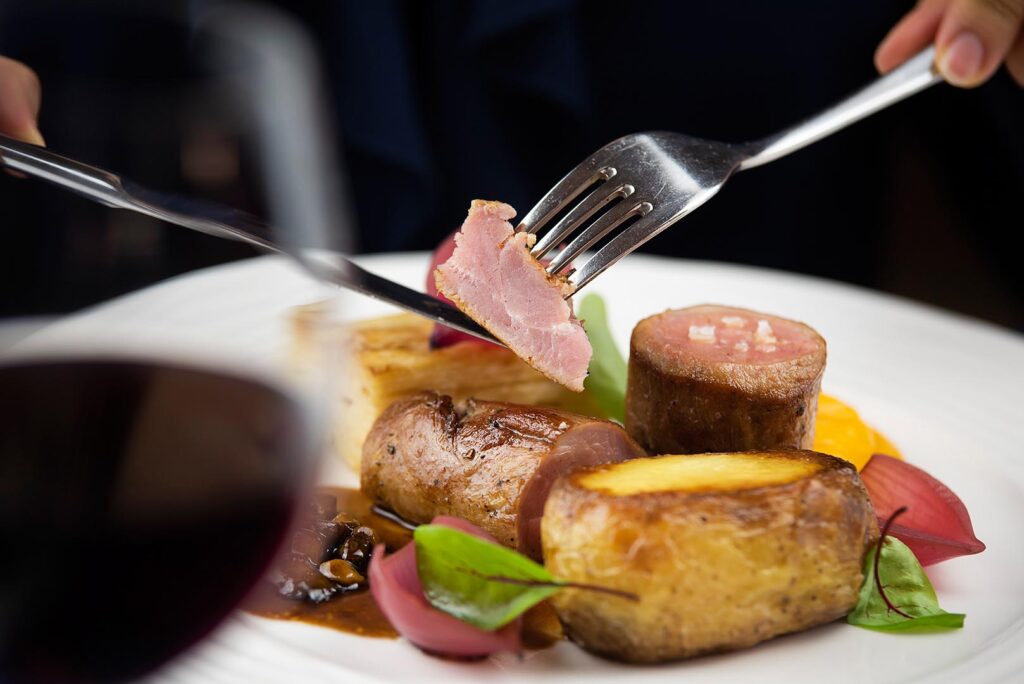
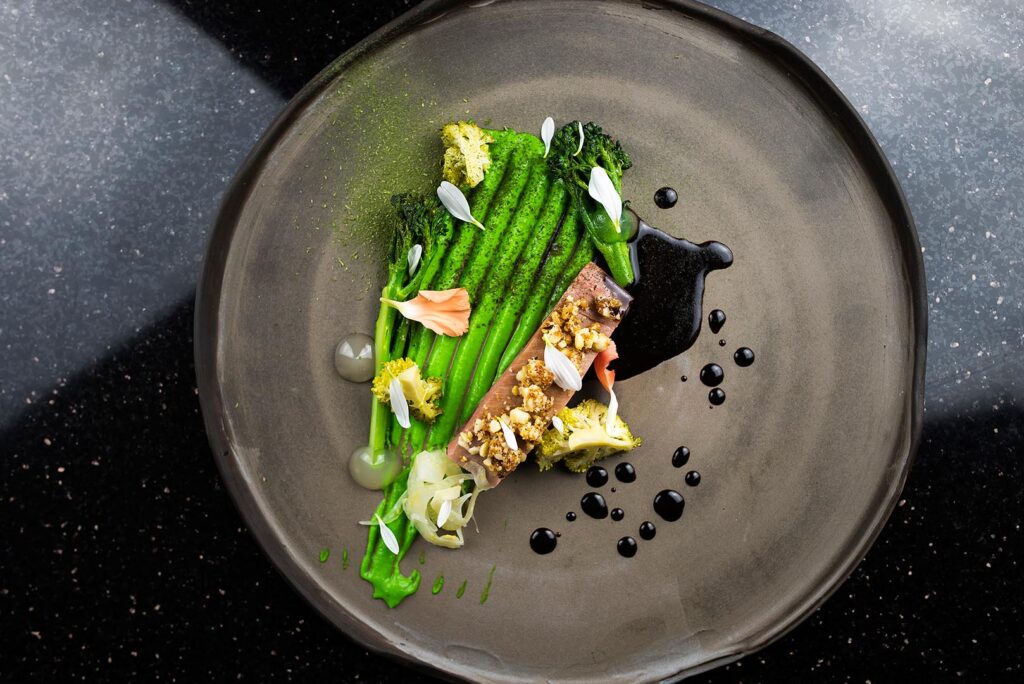
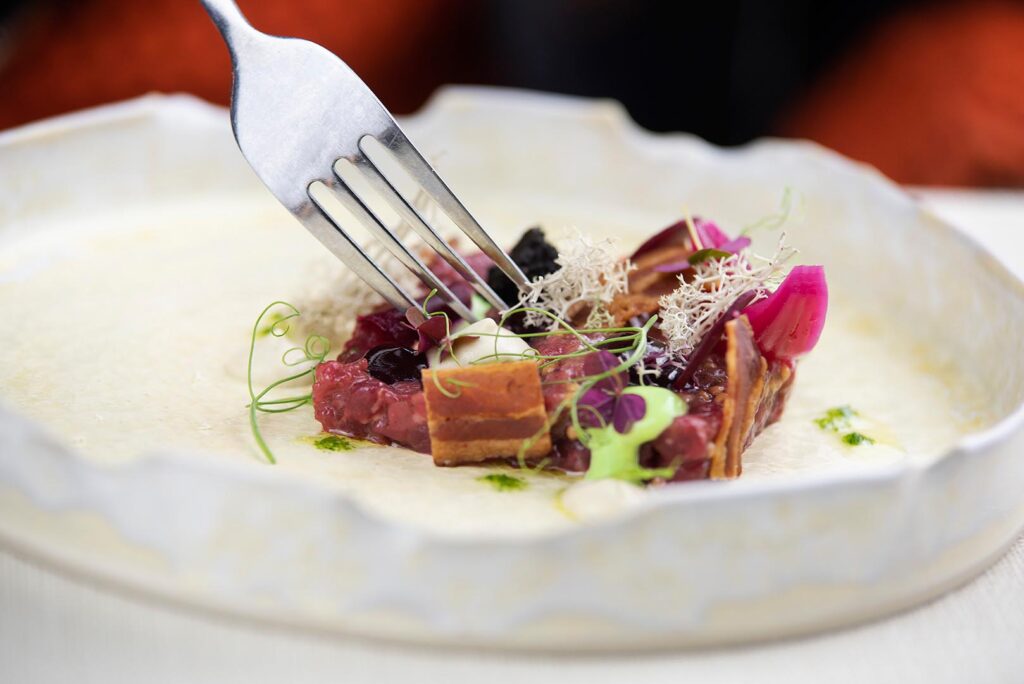
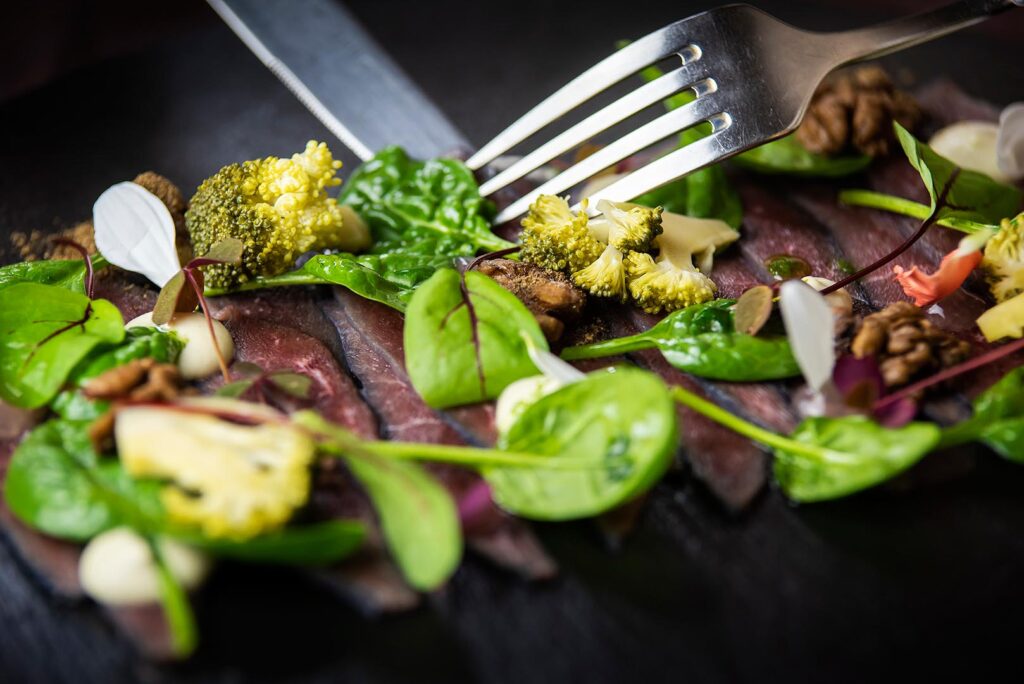
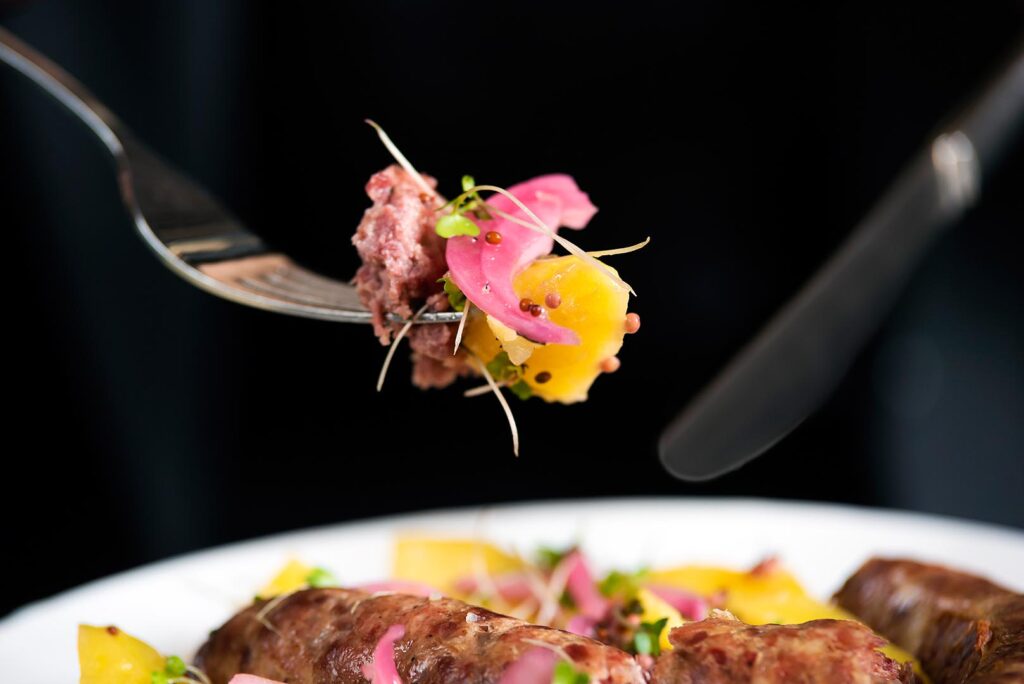
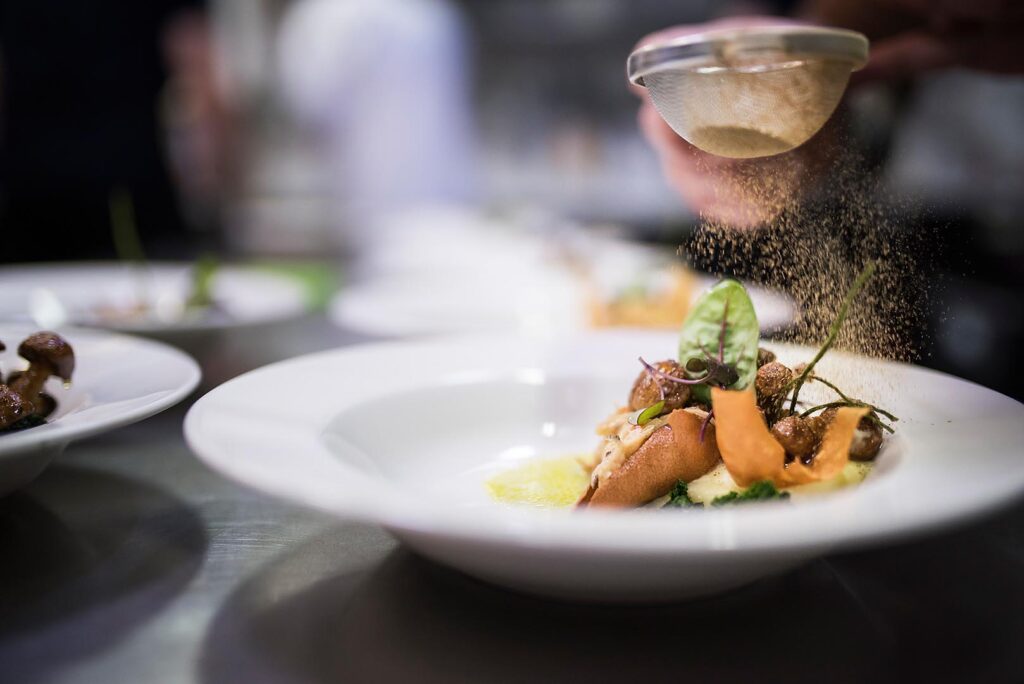
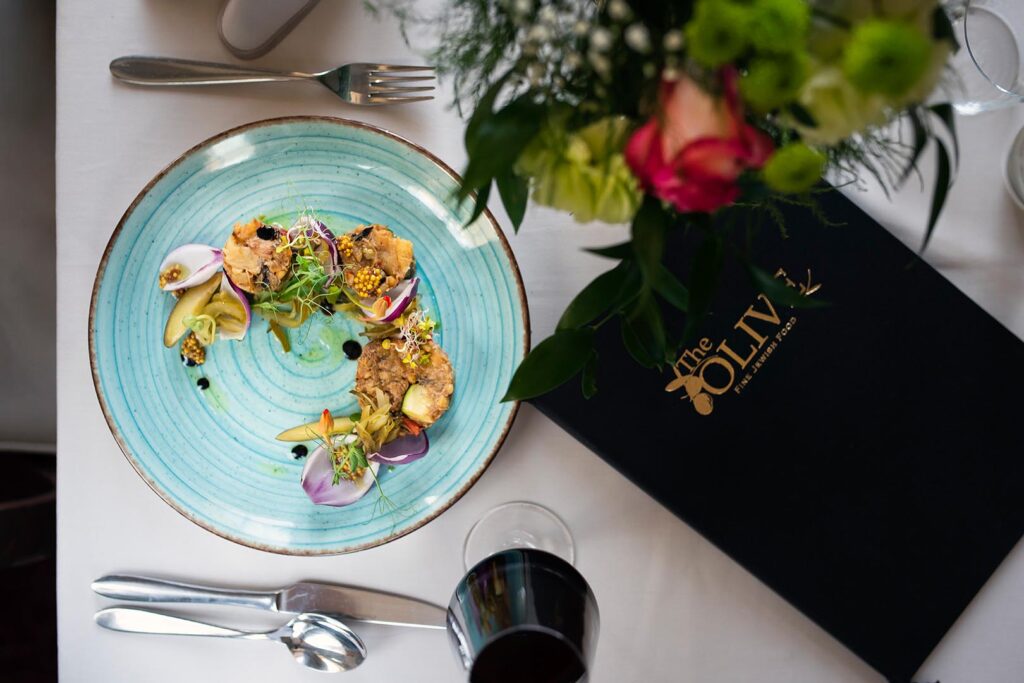
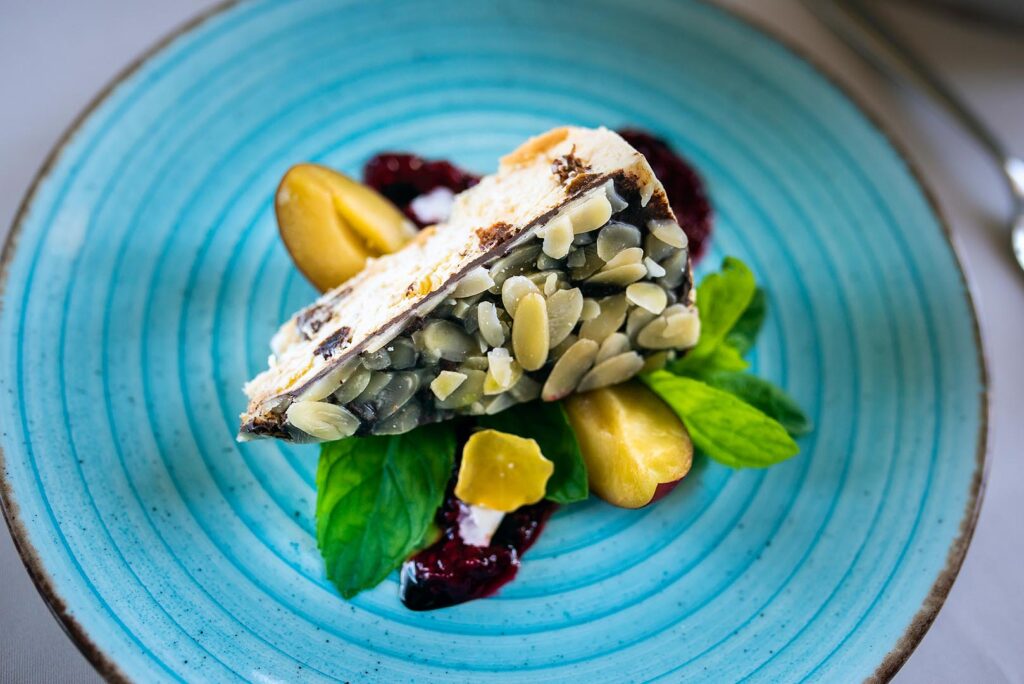
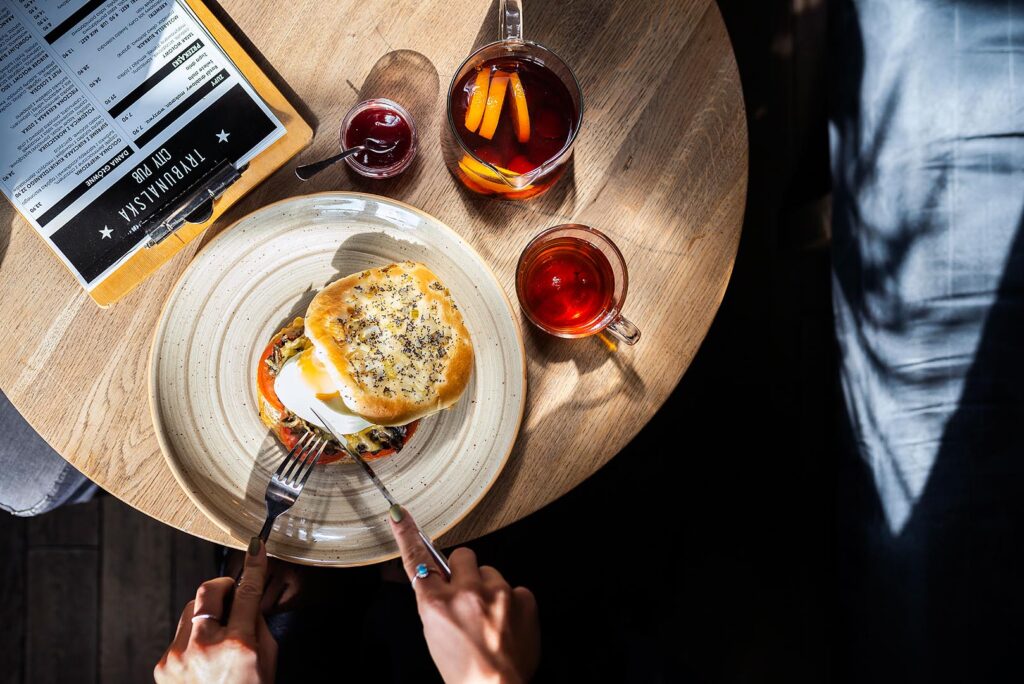
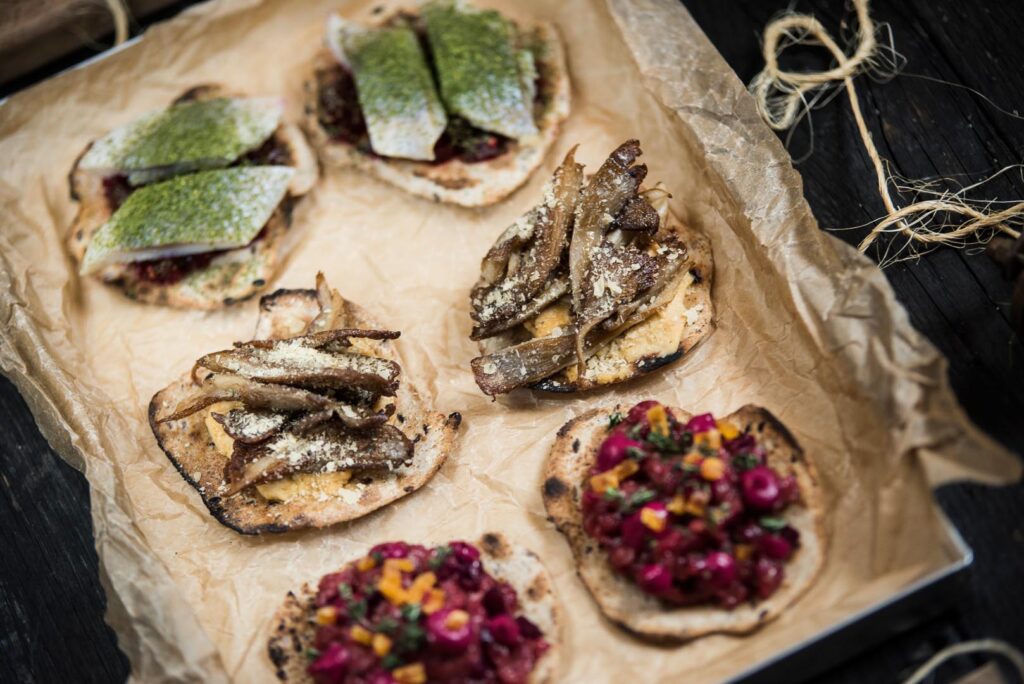
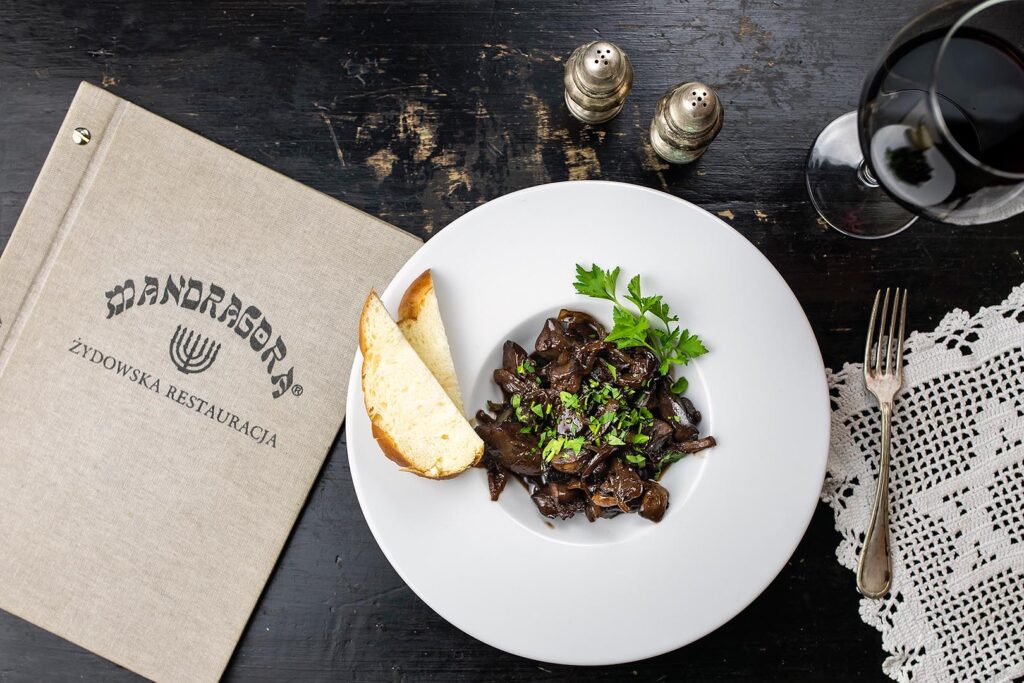
Ingredients for dough:
Ingredients for the filling:
Preparation:
Mix yeast with a bit of sugar in 0.25 glass of water, wait until it “starts”. Pour the leaven into the flour, add salt, sugar, oil and knead until the dough stands out. Leave the dough to rise. Dough on onions must be elastic. Chop the onions on the filling into medium-sized cubes and sprinkle with salt. Press lightly, add poppy seeds and oil. Roll out the risen dough to a thickness of about 0.5 cm and cut out large rings, e.g. from a plate. In the middle of the cake make a deepening, spread with spilled egg and sprinkle with onion and poppy seeds. Bake to a golden colour. The recipe of Maria Bogucka from Przedmieście near Turobin, known before the war as ‘Cebularze’.
Ingredients:
Ingredients for the coating:
Preparation:
Rinse the meat, loosen it from the bone, grind it. Soak the roll in milk, squeeze, grind. Carefully make by hand, mix with the breadcrumbs, melted butter and egg, add salt and pepper to taste, divide the mixture into 5 equal parts. Make balls with hands moistened with water. Cut the stale roll into thin, tiny, rectangular toasts, mix them with sifted breadcrumbs. Immerse the meat in flour, mixed eggs and breadcrumbs with toasts, make 1.5 cm thick chops, giving them a rectangular shape. Heat the lard in a frying pan and brown both surfaces of the chop to brown, when turning the schnitzel, add butter for frying, brown them together with the meat. Serve with potatoes, spinach, carrots, peas or vegetables cooked with butter.
Ingredients:
Składniki na sos:
Preparation:
Boil the broth on vegetables and spices. Put the fillets into the stock. Boil over high heat, reduce the flame and cook on low heat. Prepare the sauce. Melt the butter, grind with flour and spread the broth. Add a glass of cream, season with salt and pepper, add dill and parsley. Finally, gently season with nutmeg. Arrange on a platter, pour over with sauce and serve with dill potatoes.
Ingredients per 6 portions:
Preparation:
The day before, wash, dry, clean, cut the carp into bells and season with salt and pepper. Put it in the fridge for the whole night. Peel and dice the onion the next day. Peel and slice the carrot and parsley. Pour a little oil into the pan and fry the sliced vegetables. If the vegetables are slightly glassy, pour beer over them. Simmer for a while. Put the prepared vegetables together with the beer sauce into a heat-resistant dish. Then arrange the carp pieces and add sultanas and cranberries to the sauce. Bake under a lid for about 25 minutes at 180ºC. After that, add gingerbread grated on a grater (with medium eyes) to the sauce and add a few slices of scalded lemon. Alternatively, pour 1/2 cup of boiled water into the sauce. Stir the sauce gently. Put the dish back in the oven and bake under a lid for about 10 minutes. Serve warm. On the next day, the sauce thickens more strongly.
Preparation:
Rub the leg with salt, pepper, garlic, and chopped fresh mint. If it is fatter, puncture it slightly so that the spices can enter the meat more easily. Wrap very tightly in several layers of aluminum foil so that no juice leaks. Set the oven to maximum temperature (250-270°C) and put the leg of lamb inside. Immediately reduce the temperature to 120°C. Then just wait, but for a very long time: seven or even up to nine hours.
When unrolled, the leg rests before cutting, carefully pour the sauce into a saucepan (if it is not enough, add some red wine), reduce and then thicken, adding cold butter to the hot sauce piece by piece, stirring constantly.
Ingredients for dough:
Ingredients for stuffing:
Dough preparation:
Sift the flour onto the pastry board, add yolk, salt, and olive oil. Knead the dough gradually adding water. Knead into a smooth mass. Set aside for 15 minutes for the dough to rest. Divide the dough into parts. Pour one part into a thin cake, leave the rest covered with foil to prevent it from drying out. Cut out the circles, put on the stuffing, stick it together. Cook in salted boiling water 2-3 minutes after the dough has flown out.
Stuffing preparation:
Grate the potatoes as for potato pancakes. Dice the onion and fry it. Add grated potatoes and fry them. This will make a gnocchi ball. If someone likes, you can add greaves, fried, chopped sausage. Season to taste with your favorite herbs. For me, it tastes best with only pepper and salt. Stuff the dough with the stuffing prepared this way.
Ingredients:
Preparation:
Mushrooms, soaked overnight, chop and boil in the water they have soaked in. Cool down, cut into strips, do not pour out water from the mushrooms. Cook rinsed cabbage, squeeze, add mushrooms, glassed onion, season with salt, pepper, and honey, pour water from mushrooms, and bake in the oven. Remove the ribs from the sleeve. Arrange in the shape of a crown. Put the stuffing inside. (Original recipe by Regina Wróbel from Osmolice).
Ingredients:
Preparation:
Fry the chopped onion in goose fat and set aside. Dice the meat and fry separately. Place the previously soaked beans on the bottom of a heat-resistant dish. Put the meat on the beans, then put the onion on the meat. On the very top put the whole garlic bulb. Sprinkle the dish with soaked barley groats and add salt. On top put the four raw whole eggs and pour a little water. Cover and put in the oven. Bake for several hours. Do not stir. Leave in the oven until morning.
Ingredients:
Preparation:
Pour the beer into an enameled pot, boil with bread, adding butter and spices. After cooking, rub the soup through a sieve, pour it into a clay jug, add half a liter of boiling water and serve in clay pots. You can add white cheese chopped into cubes. In one of the oldest Polish folk songs it is written: “If you, the hop, hadn’t tied to the poles, you wouldn’t have made women from girls”. No wonder that the nutritious beer soups eaten for breakfast made a furore. From such breakfast delicacies the oldest soup in the Lublin region was born, called gramma or faramushka. It was made famous in Lublin by Szymon Szymonowic and Mikołaj Rej.
Ingredients:
Preparation:
Boil the potatoes until soft in salted water. In the end add flour and cook under a lid for 3 minutes. Then knead, stirring constantly so that it does not burn. When the mixture is ready, take a tablespoon and form chops. Place on a plate and pour over with fried lard.
Ingredients:
Preparation:
Boil the honey with butter and oil. Then grate the yolks with sugar for 20 minutes. Pour cooled honey in a thin stream into the yolks and add cream. Pour soda into sifted flour, add the whipped mixture, knead the dough, add 2 tablespoons of caramel and gingerbread spice. Knead the dough, put it on the baking tray. Bake for 1 hour at 150 degrees C.
Ingredients:
Preparation:
Mix cream with yolks, sugar, and salt. Boil the beer with a crumbled bread roll and pour it hot, stirring, into a pot with yolks and cream. Put it on the fire again bring it almost to the boil, but do not boil. Cut the curd into cubes. Dice up Wroclaw roll as big as cottage cheese, dry them in a frying pan without fat. Put the cubes of cottage cheese into plates with beer pottage, serve toasts separately.
Ingredients:
Preparation:
Throw the herbs into a glass jar, pour the spirit mixed with water, close tightly and set aside for 2 weeks. Pour it through double folded gauze, add sugar heated with water, set aside for a week. Re-filter, pour into dark bottles. Take a shot and set aside for the Bénédictine to mature.
